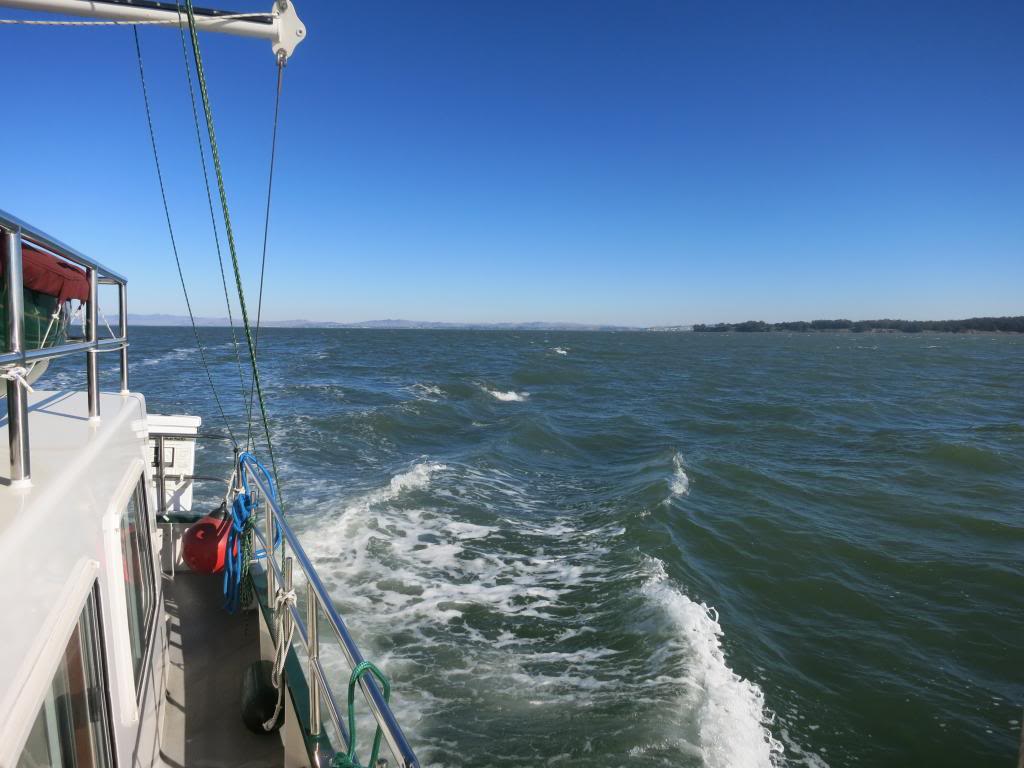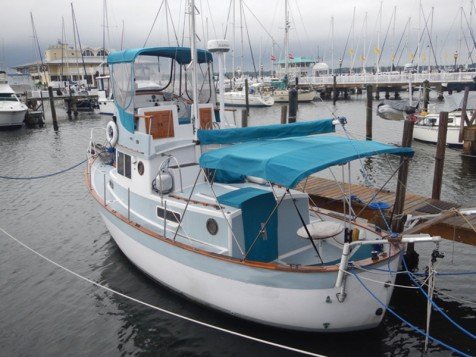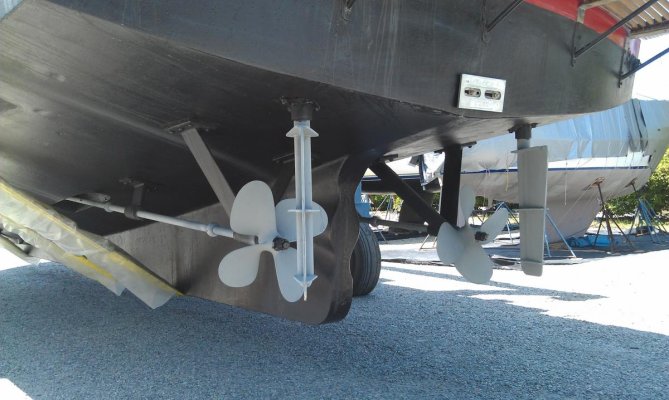Eric
My description came right out of
VOYAGING UNDER POWER almost word for word.
I am traveling and do not have my copy here but the concept was simple. (you already know this Eric

)
A full displacement hull has a shape, such that no matter how much power is applied the boat will not climb over its bow wave.
Now, the concept of semi displacement, and I have used it myself is pure BS. Either a boat can climb over its bow wave or it cannot. Generally this occurs at 2.0 x sqft of the water line length.
Engine size does not define FD or SD status. Hull geometry does.
You can put small engines in a boat that COULD plane but that does not make it a FD hull.
You could put gigantic engines in a FD hull and that won't turn it into a anything more than a overpowered boat.
So, the question people are starting to ask is why would you ever build a planing hull boat and put little engines in it.
The answer to that is stability, and fuel economy
A planing hull boat will exhibit higher initial stability than a FD boat. This is easily demonstrated by comparing a FD boat and a planing hull boat at anchor. The FD boat is much more tippy. People don't want tippy. They want stable.
The smaller engines all came about due to the sudden increase in fuel prices in the early 1970's. This opened up a new concept, that being a large recreational boat that was economical to operate.
Now lets Fast forward from the 70's to the 90's. The slow boats of the 70's and 80's were just too slow. People had to make a living to buy the boats and they needed to have a faster boat.
So, what did the marketeers do, well they took the same basic non tippy (planing) hull designs that were so comfortable and put bigger engines in them. These boats typically operate at just under 2.0 X sqrt WLL, and burn a hell of allot of fuel doing it, but they met a market need for speed.
Then designers actually started optimizing hull forms to be more efficient at these slower than text book planing speeds and the boats we call "semi displacement" were born.
My boat is 100% typical of that. It is called semi displacement, but in reality it is a planing hull boat, that has been optimized to operate without its bow sticking straight up in the air at slightly less than traditional planing speeds.
What is better??? Well, they are all better at certain things.
A stabilized FD boat is far and away better at holding the fuel necessary, and providing safety to cross oceans.
A boat like mine is far better at providing people with choices. Go slow and be comfortable and efficient. Go fast and avoid the really rough weather, making it to a safe port in 1/2 the time.







 Say it ain't so...
Say it ain't so...